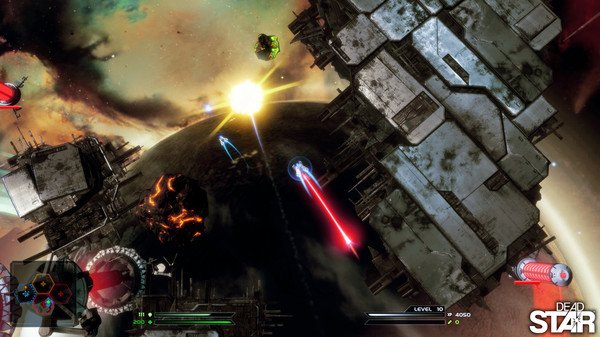As dull as the light coming from a… dead star.
There’s a fusion restaurant down the street from where I live that combines Chinese cuisine with Japanese sushi, the results of which are mixed (rimshot!). Maybe it’s because its menu does not try to blend these two flavors in any organic way; they just slap the salmon rolls next to the orange chicken [Which is not really Chinese food. ~Ed. Nick] and call it a day. Lately, there seems to be a similar trend in the indie game scene, with genres thrown together like subatomic particles in the Large Hadron Collider.
While there have been successful attempts (Enter The Gungeon, Crypt of the Necrodancer), others have been less so. Dead Star, the first original game from Armature studios, attempts to fuse the action of a twin-stick shooter with the tug-of-war dynamics of a MOBA. The final result ends up being less like a supernova and more like a dead star. Rimshot!
Players take on the role of a nameless prisoner/pilot out in the Wastes, the galactic equivalent of Australia circa 1800. It’s a space-dog-eat-space-dog world out in the Wastes, and you have to do everything you can to escape the dying star nearby before it goes full supernova (my fiancé went full supernova once at the grocery store, trust me when I say you don’t want to be near that). Getting out means grouping up in teams of five or ten to capture and upgrade Outposts across procedurally generated maps. It’s all very well-coordinated for what is supposed to be the most ruthless and dangerous thugs in the galaxy duking it out for survival. Most players won’t care about the story, though, as most of it is buried in menus. Other than some backdrop provided during the tutorial, the only decent chunk of story I discovered was under the help menu. The help menu. You know, where tips and tricks go to die.
Conquest mode is the game’s primary multiplayer mode. There are nine ships to choose from, broken up into three categories: Scouts, Raiders and Frigates. Scout ships are fast but weak, designed to quickly capture Outposts. Raiders are a jack of all trades and good for collecting resources to level up player-captured Outposts. The Frigates are the heavy hitters, slow but powerful, providing essential offensive and defensive support for teammates.
Ships are also broken up by factions, each of which caters to a certain playstyle. Valant ships, for example, are offensively focused, while Ithid ships are designed to sneak into enemy bases and take them out from within. All of the ships are very well-balanced, with no one match being overwhelmed by one type. Unlike a typical MOBA, in which players choose one “hero” to play with the entire match, players will choose three ships before the match starts and can switch between them during a match. This allows players to change tactics mid-match to counter their opponents.
Maps are broken up into sectors, each one procedurally generated to include various hazards and obstacles. Each team starts off with one Outpost at one end of the map, with neutral Outposts in the center and along the sides. Matches can be won one of two ways: capturing all of the Outposts surrounding your opponent, taking down their shields and opening up their primary Outpost for attack, or (most commonly) capturing enough Outposts to gain control of the Guardian Defense Cannons. Most matches last around fifteen to twenty minutes, which is short for a MOBA, but it’s here the “fusion” begins to feel undercooked.
Matches can feel like they are dragging, especially when players are on the losing side. Gathering resources, essential in leveling up Outposts and gaining XP during a match, is dull, consisting of firing at rocks until they explode. Long stretches of space between Outposts can mean a slow trek into battle, only to be quickly blown up and sent back to base.
Once players are engaged in combat, the game starts to shine, but it is not without its own faults. For one, those playing on a Playstation 4 (as the game is free for PS Plus members this month, that will be most people) are at a serious disadvantage. Precision shots are difficult to aim using the right analog stick, with a disproportionate number of attacks requiring said precision. Often, my guns would overheat before I could get a decent shot at an opponent. Teamwork is vital in Dead Star, as no ship is designed to support a lone-wolf approach. The best matches were ones where Frigates from both sides came to a head, with smaller Scouts and Raiders dogfighting on the peripheral. This was rare, however, as true to form, no sound carried in space (read: people played with their mics off).
Speaking of rare, Dead Star has a second multiplayer mode, Escape Run, in which players escort a large capital ship through live matches to the outer reaches of space. Success, according to the developers, awards the rarest of the rare rewards. There is the chance that, during a regular Conquest match, a capital ship will show up, and players can either choose to keep fighting each other, or unite to take down the capital ship and reap some rare rewards. This sounds awesome, but in all of my time with the game, not only did this never happen, I never even had a chance to participate in the escort. These escort missions are given out via contracts earned at the end of a match, and only to those who perform particularly well. The criteria for what that entails is not made clear, though it was clear that I was not meeting those expectations.
That brings up my other major gripe with the game: the rewards themselves. Every ship is unlocked from the start, so players instead compete to unlock character portraits, paints, and decals for their ships. Paints and decals are only unlocked by gaining enough Fame in a match to warrant a reward roll. How that Fame is gained, however, or how to gain more of it is unclear. Rewards can also be earned by gaining levels with your pilot, but the whole process feels ironically unrewarding. Other than Frigates, ships can be so small on the screen that adding any design to them seems wasted. Portraits, which have a very cool comic-book style to them, are only seen when a player destroys your ship. Win or lose, players earn components that can be used to upgrade their ships permanently, but even that felt minimal. All of this, coupled with the long, sometimes dragging match times means a lot of time spent with very little to show for it.
Playing Dead Star is like eating at a fusion restaurant down the street. You order all the food you like, only to realize the California rolls don’t pair well with the kung pao chicken. On paper, the whole thing sounds delicious, but in the end the effort to combine them gives you a stomachache. It’s not a bad game; it just doesn’t do anything striking with the mechanics it borrows. The character art is wasted by its lack of use, as is the story, which could have benefited from a dedicated single-player campaign. Playstation Plus users may want to give it a shot, but I am sure there is better food on the block.
-
Ships are balanced
-
Encourages different playstyles
-
Awesome character art...
-
...which is under-used
-
Story buried in menus
-
Unrewarding rewards
-
Gameplay, matches can drag
dead-star
-
dead-star #1
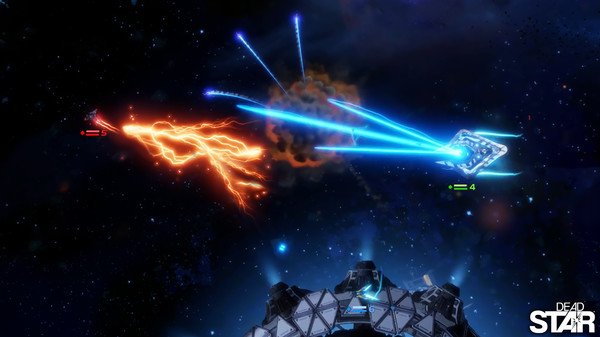
-
dead-star #2
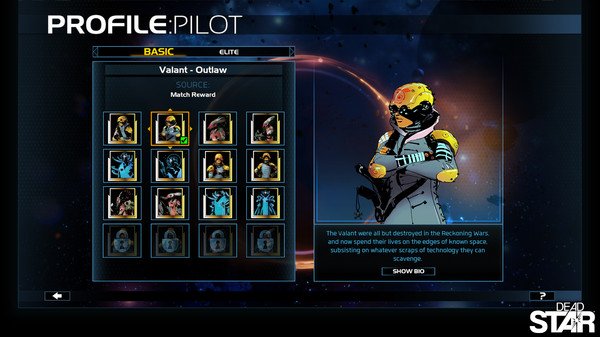
-
dead-star #3
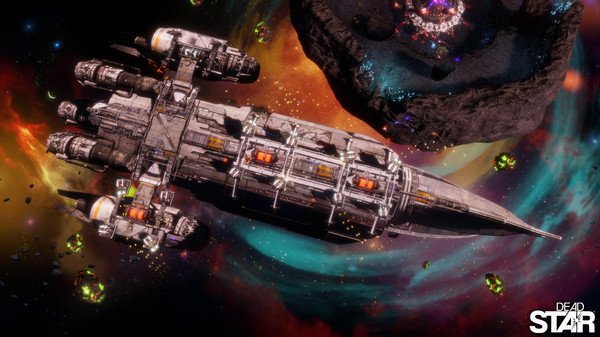
-
dead-star #4
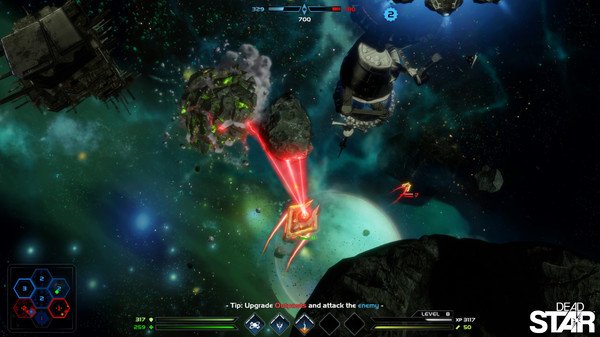
-
dead-star #5
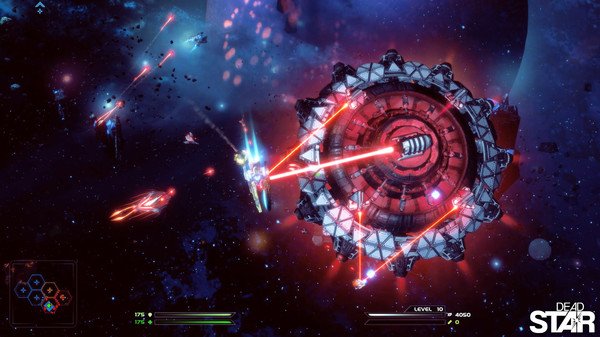
-
dead-star #6
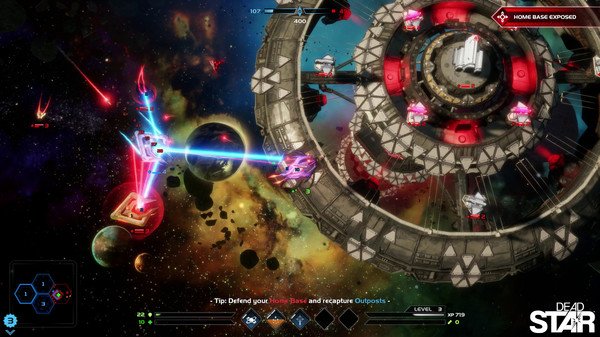
-
dead-star #7
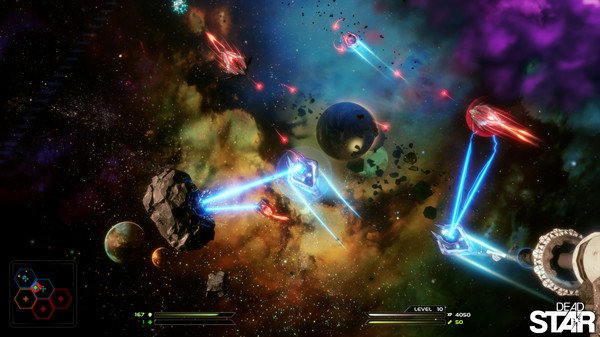
-
dead-star #8
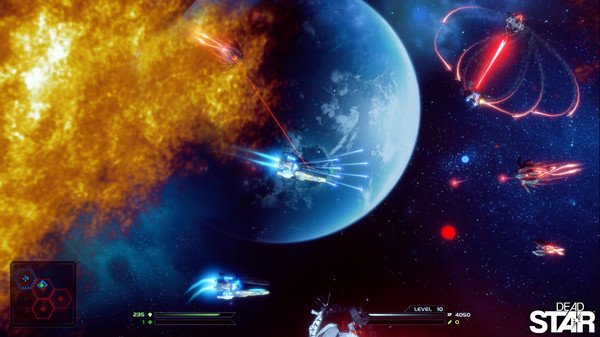
-
dead-star #9

-
dead-star #10
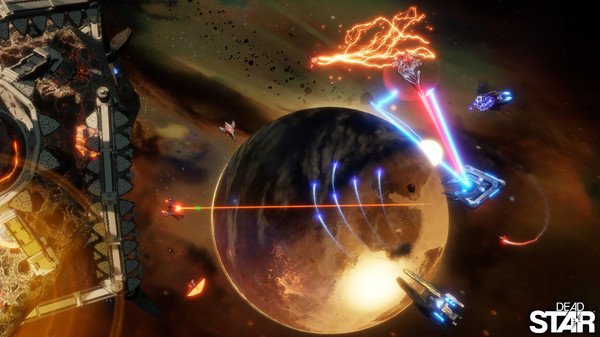
-
dead-star #11
